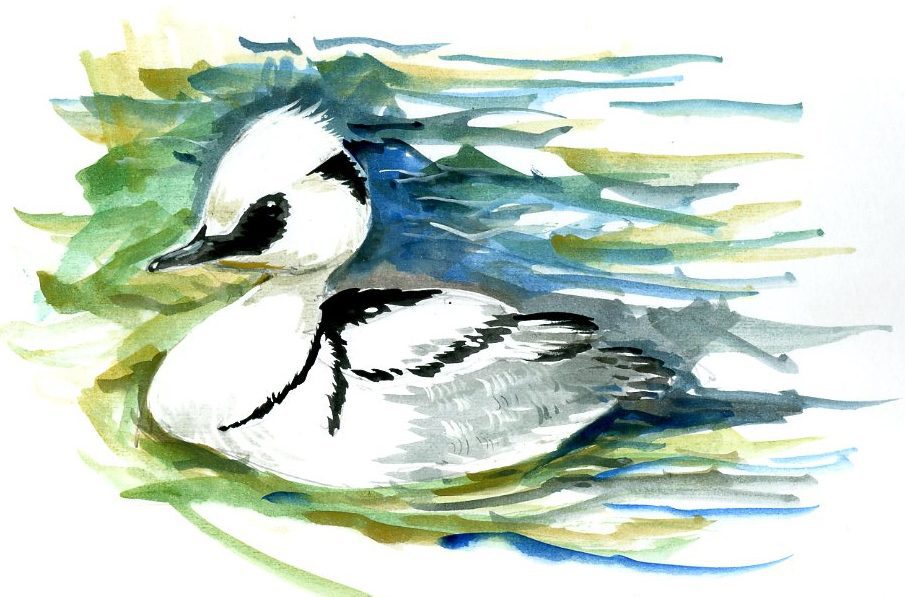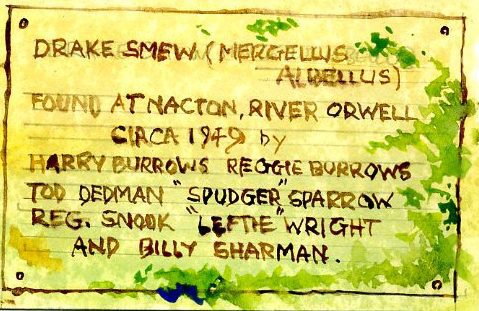
As we young naturalists from Priory Heath searched the woods, fields and the shoreline of the Orwell river, we often saw the outline of a large wooden barn on the unexplored Prettyman Estate at Nacton. Sometimes we saw smoke rising from the single chimney of this rather plain structure. It was rumoured that a hermit lived there, although none of us knew exactly what a hermit was. Was this person a dangerous recluse?
One day in spring, when we were collecting newts, tadpoles and any other interesting bits of wildlife, we decided to take a closer look at this barn. No smoke was seen, so we assumed this so-called hermit was not at home. We felt a bit uncomfortable, though. Tod felt that someone was watching us, and Reggie nearly jumped out of his skin when a bearded man appeared at the front door. Reggie blurted out, “Are you a hermit?”. The hairy man replied. “No, I am ‘Rubble Minns’, at least that is what the locals call me. He explained that his real name was David Minns but that during the war a German pilot jettisoned his bombs quite close to here because he was rapidly losing height. One bomb destroyed his cottage on this estate, reducing it to rubble. Luckily, he was not there at the time, but ever since he had been known as ‘Rubble Minns’. Rubble was a gentle, well-spoken man who kindly explained to us heathens that he was a naturalist doing research on the flora and fauna of Suffolk. We were delighted when he offered to show us some of the specimens he had collected. It made our samples in jam jars look rather pathetic, but he suggested that what we were doing was a start and that we should continue with our research.
As Rubble began to point out his books, artworks and specimens, he noticed that Harry, Reggie’s older brother, was carrying a dead duck in his hand. We explained that we had found this bird washed up on the tide line. Rubble’s eyes lit up. “Gosh, that duck is a drake smew (mergellus albellus)! It is the first one I have ever seen on this river.” He then suggested that we should hand it over to him, and he would mount it (stuff it). This man also happened to be a taxidermist. Of course, none of us knew was a taxidermist was. Reggie couldn’t have told the difference between a dead duck and a man who drove a taxi!
Tod and I visited the home of Rubble several times after that, either taking ‘stuff” that we had found in the surrounding countryside or marvelling at Rubble’s own collection. His paintings and black-and-white photos were lovely, but his notes seemed too complicated for us – Latin names for everything. Once, when all of our gang was there, Reggie thought that Mr Rubble’s stew smelt super. When asked, Mr Rubble explained that his stew was a collection of fox, rabbit, red squirrel, and stoat heads with the bones being boiled to remove the flesh. Mind you, it did smell very appetising.
I told my parents and my older brother about this clever man who lived in the woods at Nacton. My brother called him an eccentric. When asked what that meant, my brother said that Rubble was an intelligent idiot. Surely, that is a definition of an oxymoron. Mr Rubble continued to bring joy to us heathens for some time. We took him objects, he identified them, and then one day he showed us the mounted drake smew. It was magnificent and on a plaque was a list of our names, the youngsters who made the first record of a smew at Nacton.
As the years went by, we visited this naturalist less frequently as other things got in the way. Senior school meant more study, and then gradually the heathens of Priory Heath drifted apart. Several years later I took some of my nature notes, which had been published in our school magazine, to show Mr Rubble. I was feeling quite pleased with myself, but I found that his wooden home had gone. There was, however, a stone memorial small and unobtrusive standing close to the hedge where his home had been. A simple inscription read “David Rubble Minns, lover of nature”. So simple and yet, this man had inspired us, a man full of enthusiasm and willingness to share his time and world with us. I don’t remember many people being much interested in us in those days.
Later, in senior school, I wrote about Mr Rubble and what had happened when we boys discovered him. Mr Day, our austere English master, marked my piece quite highly as it happened but dropped a mark owing to a couple of spelling mistakes. He wrote at the bottom “Well, Snook, it is a well-written essay on a remarkable man but I am beginning to tire of your fantasy scribblings!”
Mr Day, if you are ‘up there’ there is, in a glass cabinet on a shelf in the Museum somewhere, a beautifully mounted drake smew inscribed “Found dead at Nacton on the Orwell River circa 1949” by Harry Burrows, Reggie Burrows, Tod Dedman, ‘Spudger’ Sparrow, Reg Snook, ‘Leftie’ Wright and Billy Sharman.
‘Honi soit qui mal y pense’, Mr Day!
Reg Snook

